In 220 minutes, the first documentary in Hu Jinquan, movie master hit hard.
Recently, the first documentary film "The King of Wuxia Jinquan", which officially focuses on Hu Jinquan, movie master, released a 10-minute segment.
Directed by Jingjie Lin, the director who once filmed "They Write on the Island: Sweet Load-Poet Wu Sheng", the film was nominated for the best documentary at this year’s Taipei Film Festival.
The film traces Hu Jinquan’s wandering footprints and creative tracks from Beijing, Taiwan Province and Hongkong to the United States, piecing together how he became such a unique artist, and uncovering his crazy style of pursuing perfection and life stories that are rarely touched.
Jingjie Lin said, "We need to use a lot of clips, but many precious pictures need to pay copyright fees to make the film more complete." Since Ang Lee directed Crouching Tiger, Hidden Dragon to pay tribute to Hu Jinquan’s "Chivalrous Woman", he naturally needed the clips of Crouching Tiger, Hidden Dragon. Ang Lee agreed to let the documentary be used for free, which made director Jingjie Lin very moved.
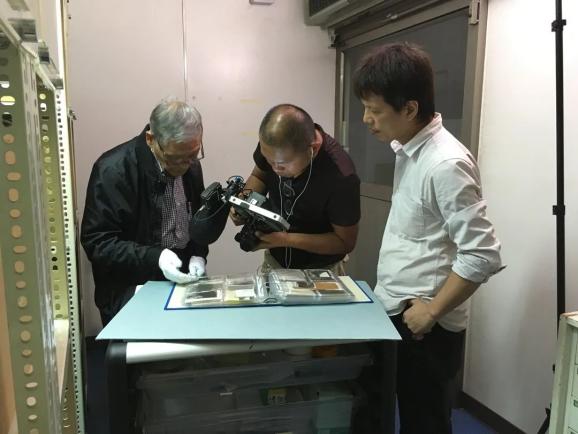
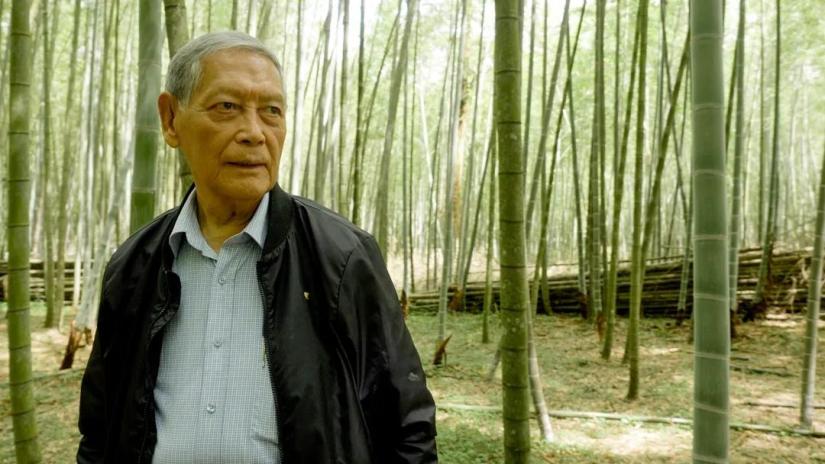
Stills of Documentary Hu Jinquan.
The director introduced his classic films one by one in the form of chronicle, and visited the filmmakers who worked with and were deeply influenced by Director Hu Jinquan. More than 40 filmmakers were interviewed, including Shih Chun, Feng Hsu, Tsui Hark, John Woo, Tong Wang, Xu Anhua, Peggy Chiao, Li Pingbin, Sammo Hung, Zheng Peipei and Qin Pei.
The total length of this film is 220 minutes, and it is divided into two parts, which introduce the extraordinary life of director Hu Jinquan from two aspects: works and life.
"The first song: The Prophet has been here" focuses on Hu Jinquan’s works, and through the analysis of the memories and opinions of heavyweight filmmakers, the audience can see the way the master made movies and the presentation of film aesthetics; "The second part: heartbroken people are in the end of the world" is a rare life story of Hu Jinquan.
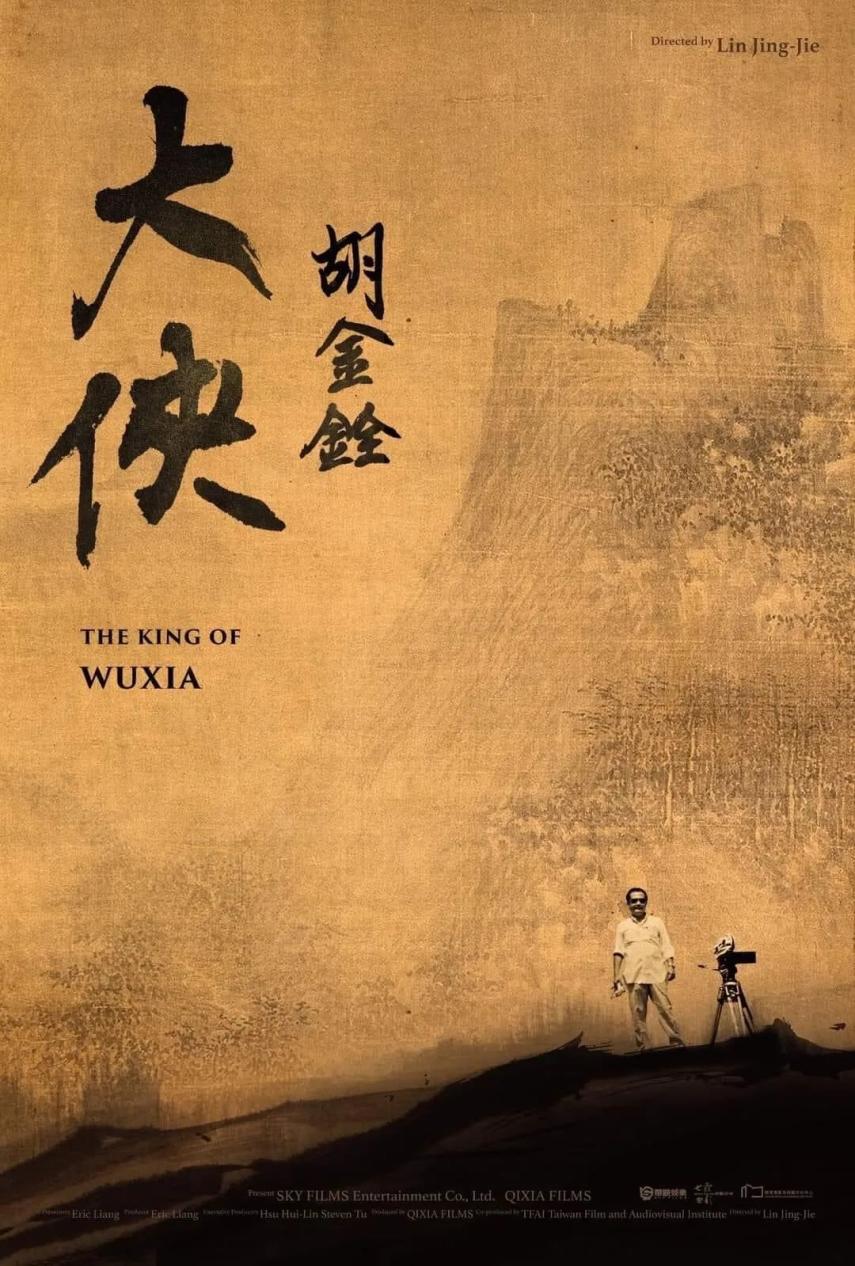
Director: Jingjie Lin
Starring: Feng Hsu/Hu Jinquan
Producer country/region: Taiwan, China
Release date: 2022-01-23 (Taiwan, China)
Length: 220 minutes
# Hu Jinquan is a somewhat indifferent symbol.
As the most outstanding martial arts movie master in Hong Kong film history, Hu Jinquan, whose ancestral home is Hebei, entered Shaw Company in 1958 and started his film career. In other directors’ martial arts films, the characters are always flying over the eaves, but the swordsman in Hu Jinquan’s films is always alone in the lonely wilderness.
From actor to screenwriter, to assistant director, and finally to become a senior and outstanding director, Hu Jinquan’s "writing wildly in space with the flesh and blood of the characters" (commented by Hong Kong film critic Huang Ailing) has added gorgeous bright colors to Hong Kong martial arts films, leaving us with many well-known works such as Yu Tang Chun, come drink with me, Longmen Inn, Chivalrous Woman, Children of the Earth and legend of the mountain.
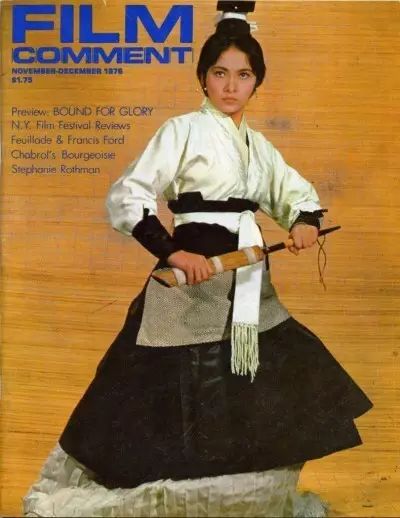
Chivalrous woman
Among them, Xia Nv also won the highest technical award at the 28th Cannes International Film Festival. On January 14th, 1997, Hu Jinquan died in Taiwan, China at the age of 65.
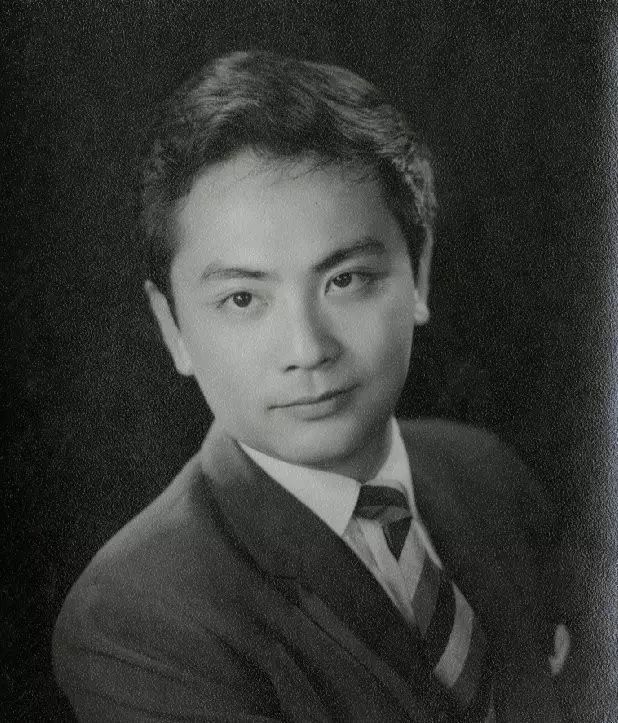
John Woo once said, "What he (Hu Jinquan) wants from a movie: besides being a movie, it is also a painting. He asked every frame of the film to be a painting. His visual effect is very beautiful and traditional, but it is also very poetic. "
Just like The Painted King of Yin and Yang, starring Joey Wong and Adam Cheng, which accompanied many people in their youth, every shot has its own aesthetic artistic conception of Chinese painting and the beauty of Chinese traditional culture and art, and it has also successfully integrated film skills with traditional opera art in the film, so that we will still "go back to see his martial arts world constantly. Our director today can use his things, which are more novel and creative than those movies that imitate the West." (Comments by Tsui Hark)
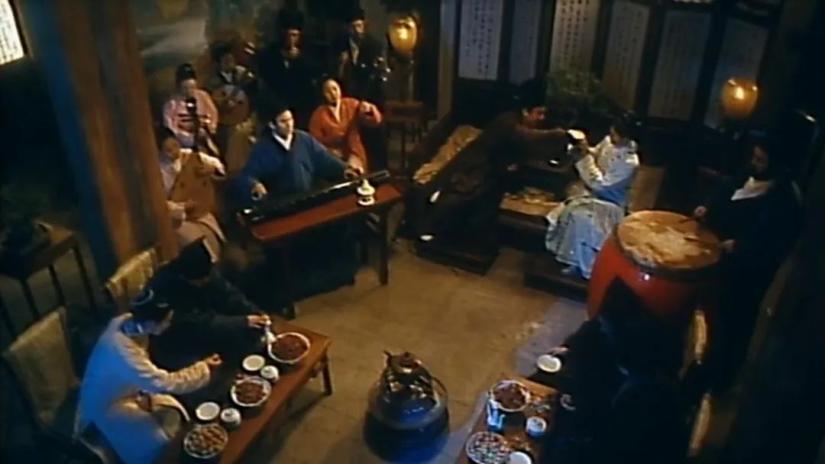
Hu Jinquan directed the stills of the movie The Painted King of Yin and Yang, which was considered by netizens to "restore" the scene in the famous painting Han Xizai’s Night Banquet.
At present, many filmmakers or researchers have somewhat forgotten him, and the study of him is not popular. Usually, we call Hu Jinquan Chinese movie master, and think that the aesthetic realm created in his films has become a unique style in Hu’s film art, especially a few martial arts films, which are often worshipped by later generations.
The narrative style and methods of Hu Jinquan’s classic martial arts films were also used for reference by many famous directors later.
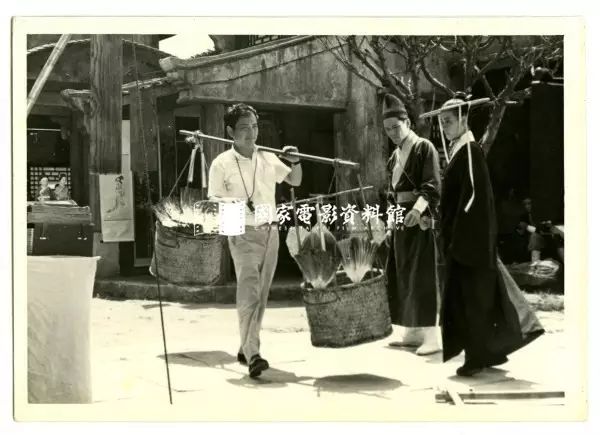
The study of Hu’s films also focuses on the film characteristics and directing techniques, while the discussion of film art design is often easily overlooked.
Like many directors with fine arts background (such as Akira Kurosawa), Hu Jinquan often works as the fine arts designer of his own films, which shows that he attaches great importance to fine arts. The fine arts design style of Hu Jinquan films is also an important part of creating the fine arts style of Chinese films. It can even be said that from him, China’s visual elements began to actively combine with films. Therefore, the exploration of Hu’s films in art has a far-reaching impact on the subsequent Chinese film art design.
# The Formation of Hu’s Film Art Style
It seems to be a coincidence that Hu Jinquan became attached to movies. After arriving in Hong Kong from the mainland in 1949, he joined a small advertising company to paint posters and billboards because he was able to paint since he was a child. The original billboard was the film version of Lao She’s My Life, which may have laid another important interest in his life-studying Lao She.
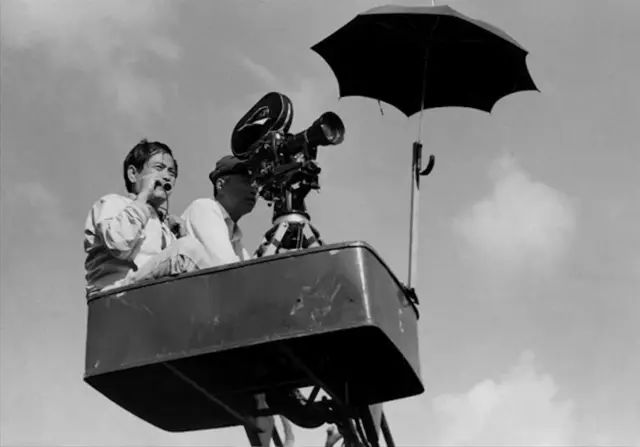
Later, Hu Jinquan also worked as a short-term advertising agent in the Longma Film Company opened by Wu Xingzhai and Fei Mu. In addition, he also helps the American engineering department of Great Wall Film Production Co., Ltd.. At that time, the director of American engineering happened to be Wan Guchan, the director who was called the father of China animation. As a result, Hu Jinquan started from the most basic film artists and entered the film circle.
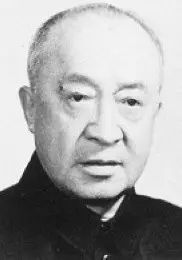
Wan Guchan
He was valued as a leading actor when he was doing art and decoration for The Slayer directed by Yan Jun of Yonghua Film Company. Of course, all kinds of cooperation with Li Hanxiang later enabled him to further his film career. As the masterpiece of Shaw and Li Hanxiang in those years, Beauty in Jiangshan won numerous awards, and Hu Jinquan, the second male, won the award for best supporting role.
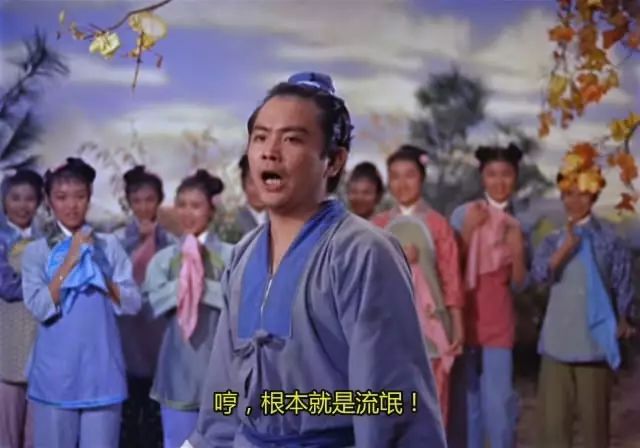
Jiangshan beauty
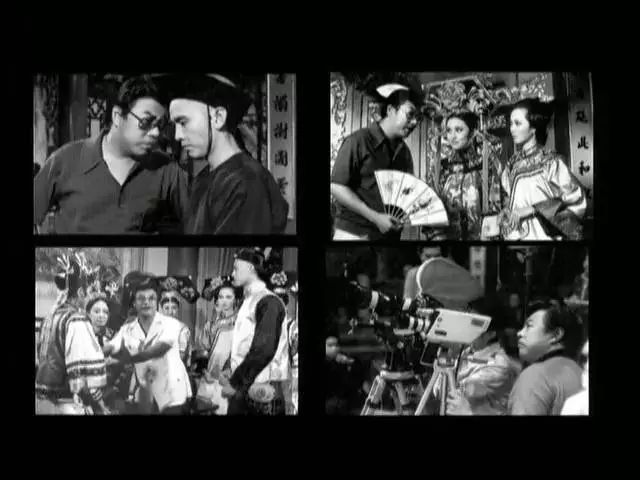
Fall in love with the country
Yu Tang Chun is his first work since he became a director, but subject to various conditions, this film can still be regarded as a continuation of Li Hanxiang’s style. What really made him start generate’s creative passion was a series of new martial arts movies.
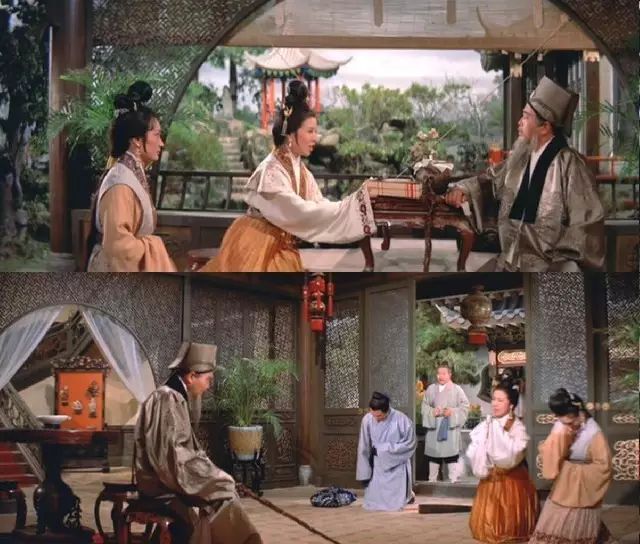
Yutangchun
In these works, Hu Jinquan can finally get rid of the artistic style of Shaw films. At that time, Shaw’s overall artistic style was theatrical and stylized because of the filming of Huangmei tune films. Among them, Li Hanxiang is the representative. Li Hanxiang is also a director with artistic foundation, so most of his film art is very particular.
Li Hanxiang’s influence on Hu Jinquan is also very obvious in his later works. After Hu Jinquan started directing movies, he often painted some China landscapes, figures or wrote calligraphy after work, in addition to sketching the necessary scenes and taking photos. Judging from these works, the charm of China’s painting art has been well integrated into the film. After settling in the United States in 1980s, Hu Jinquan drew a large number of four-grid cartoons after his film creation reached a low point.
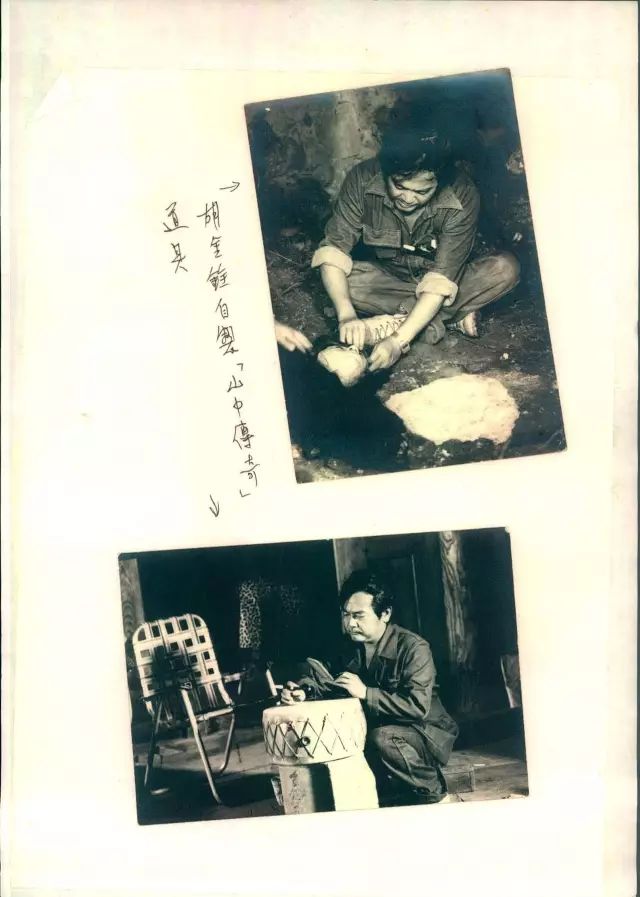
Out of interest in painting, and because he studied under Wan Guchan, Hu Jinquan began to make a classical cartoon "Zhang Yu Boiling the Sea" in 1984. For this reason, we have been working on the role and lens design related to this cartoon for 10 years. The design of some shapes has something in common with "Making a scene in Heaven", which also reveals his origin with the Wan brothers. Unfortunately, this cartoon was not made as planned for some reason.
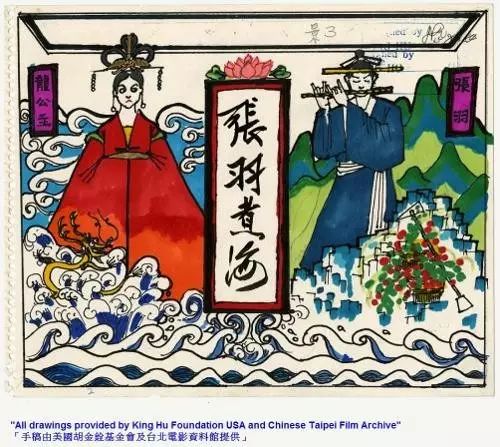
Zhang Yu Boiling the Sea
# Features of Hu’s Film Art Style
When commenting on the characteristics of Hu’s films, Metropolis mentioned Hu Jinquan’s Zen machine. In fact, the early Japanese classical films first incorporated the Zen of the East into the films. For example, through the transition space or "axial pillow lens" interspersed with still pictures to create a leisurely narrative and poetry.
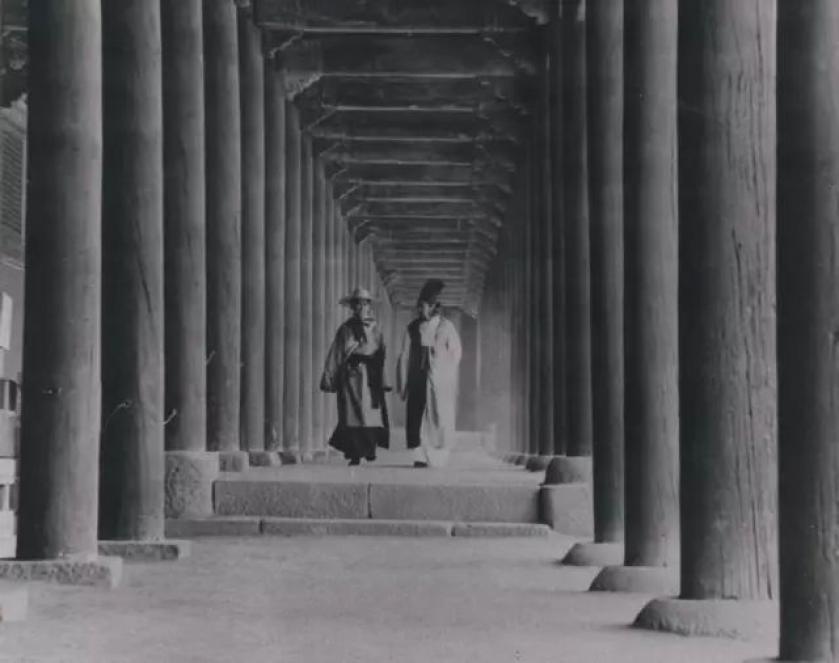
Legend of the mountain.
These oriental films not only attracted the attention of the west, but also influenced the films in Hong Kong. Shaw, where Hu Jinquan was in his early days, used to show a large number of Japanese films for cast members to learn. Among them, Japanese halberd films (such as Seven Samurai by Kurosawa, Heart Stick and Sword Through the Heart) have also become an important factor affecting the new martial arts films.
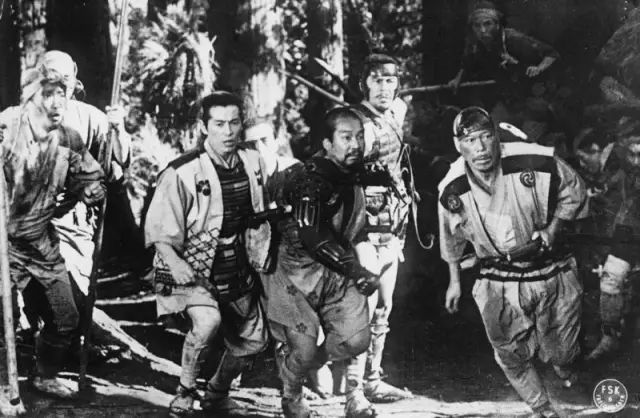
Seven samurai
These factors can also be seen in Hu Jinquan’s new martial arts movies. After absorbing the nutrition of China’s traditional fine arts and adding various elements of Japanese and Hollywood films, Hu Jinquan finally gradually developed an artistic style of his own films.
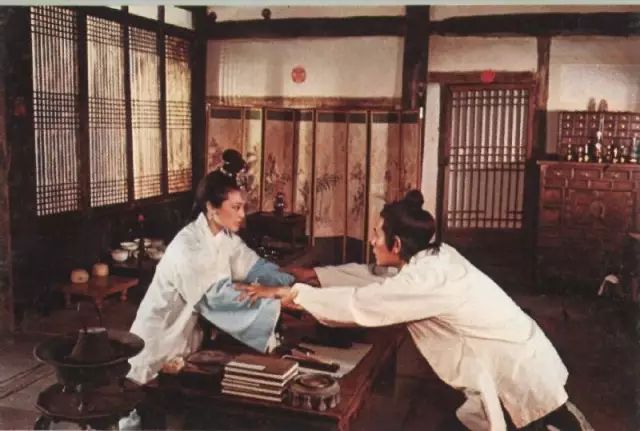
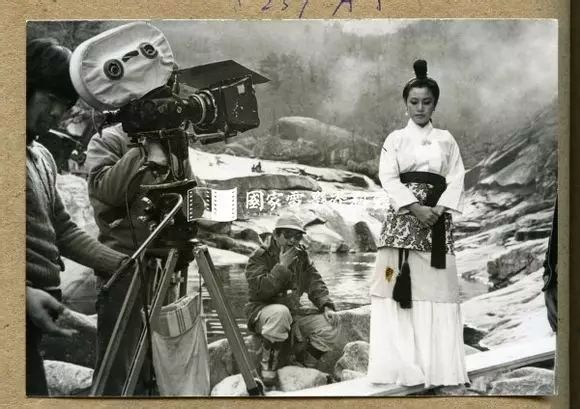
Legend of the mountain.
The most important feature of Hu Jinquan’s film art lies in his absorption of China traditional culture. For example, Hu Jinquan’s masterpiece "legend of the mountain", the screenwriter Chung Ling once pointed out in the article "something congenial, aesthetic feeling and culture" that Hu Jinquan often used the way that the viewer looked at the landscape by hand when showing the scenery. "Scholars appeared on the screen to walk long distances in nature, and most of them appeared from the left side of the screen and walked to the right. At this time, the magnificent scenery is presented to the audience in the horizontal direction with the movement of the scholar. "
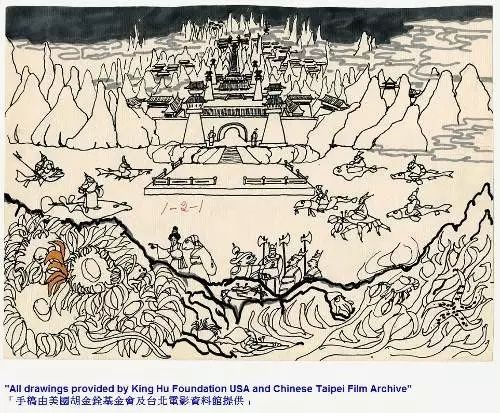
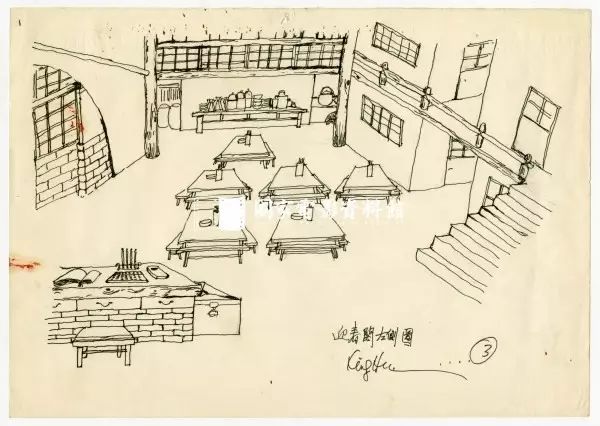
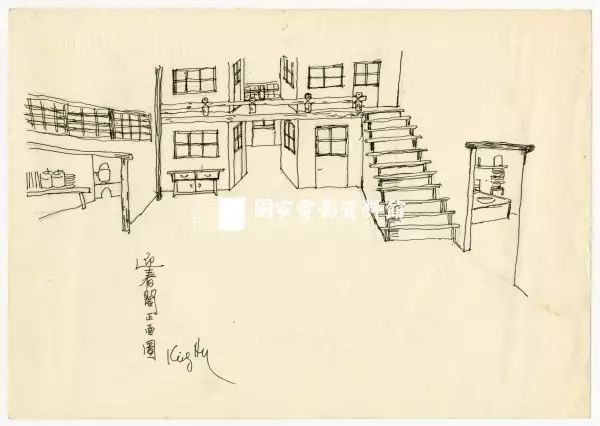
Like the landscape scrolls in the Yuan and Ming Dynasties, the characters in "legend of the mountain" often belong to the natural landscape and occupy a corner of the painting in composition. Nevertheless, the whole picture has become vivid.
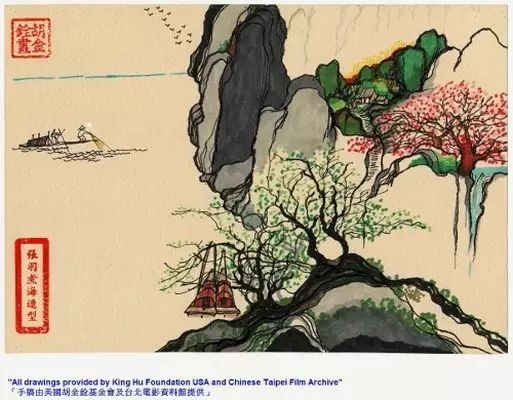
In addition, the technique of blank space in literati painting is also widely used in the film, such as the appearance of Zhuang Evian, the beautiful scenery and the beautiful scenery, which seems to be illusory and fascinating, and can be described as beautiful. The special effects in the film were rarely used because of the conditions at that time, but even so, a lot of smoke was used to create a special visual effect. This kind of smog is just like the obscurity in China’s landscape paintings.
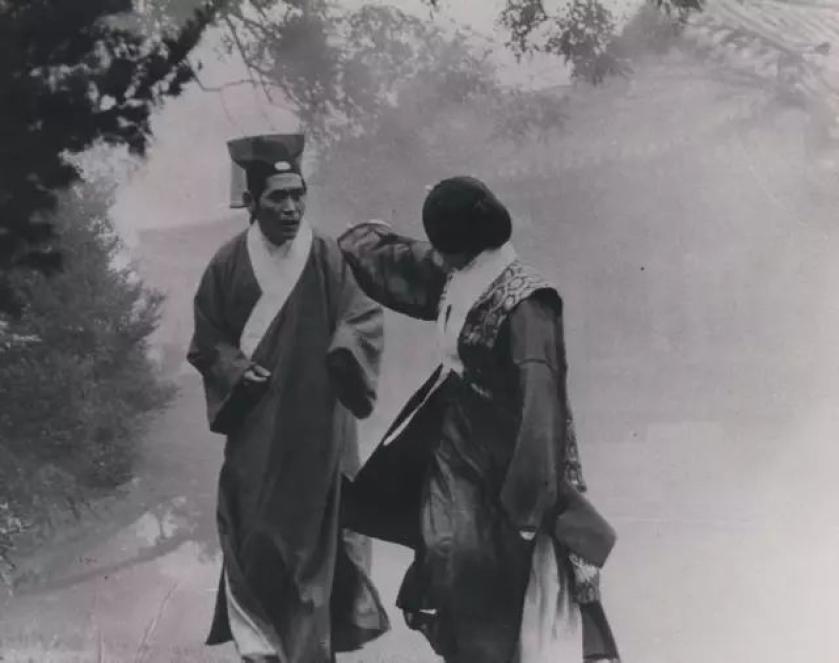
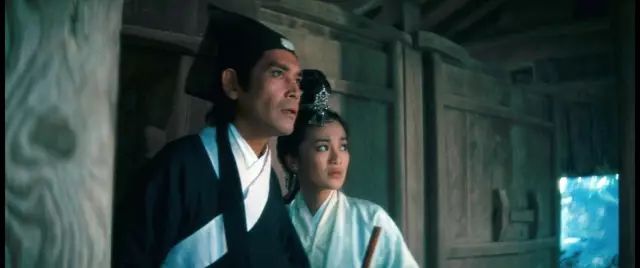
Legend of the mountain.
Another point that is commendable in Hu Jinquan’s film art is the rigor of attitude.
Tsui Hark once said: "He captured the atmosphere on the spot according to his feelings and created the picture step by step. The director at that time really had his beliefs. "
In his films, art design is a very important job, and he often does it himself.
We can see Hu Jinquan’s style of textual research in Hu Jinquan’s self-reported article "Looking for information from filming costume movies". We can still see a large number of manuscripts recorded in the textual research of people’s clothing.
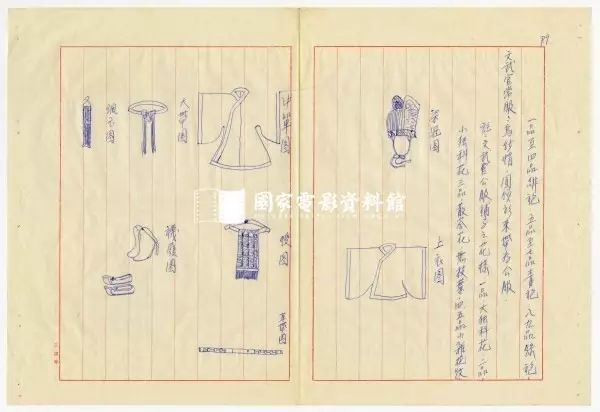
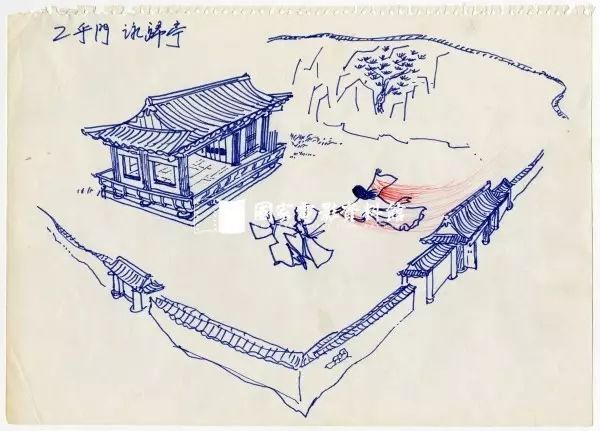
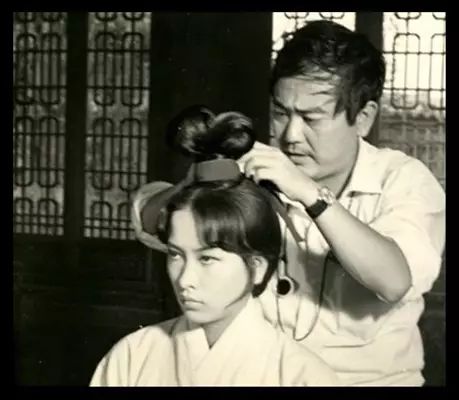
When shooting the famous film Longmen Inn, Hu Jinquan extracted and copied many contents from books such as 300 Kinds of Ancient and Modern Famous Paintings and Grand View of Ancient and Modern Famous Paintings, because it told the story that happened in the middle of Ming Dynasty. There are Chou Ying’s "Coming home late for a spring outing", "Drawing a boat on a wind gully", "Clearing a house in Tongyin", Lan Ying’s "Snowdrift in the Western Hills" and the patterns on blue and white bottles, etc., and it is indicated that the design of clothes, hats or belts can be used for reference from this information.
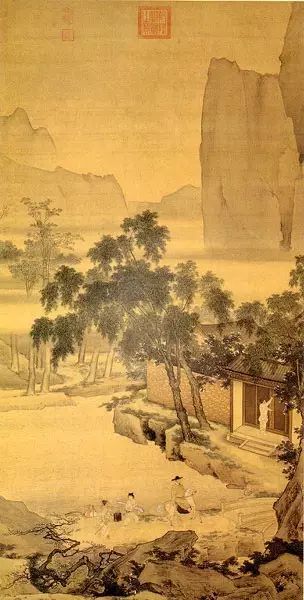
Chou Ying’s works
Because the clothing of Ming Dynasty was imitated from Tang and Song Dynasties, he even sought inspiration from Dunhuang murals in Sui and Tang Dynasties. After the design was completed, Hu Jinquan also asked Wang Yuqing, an authority on the study of clothing in past dynasties, to judge, who only made changes in some places. Of course, Hu Jinquan’s film art is not invulnerable. There is a certain discrepancy between the scene setting and the script of legend of the mountain, which may be related to the fact that it was impossible to enter the mainland for filming at that time.
# Influence on Chinese Films
China’s martial arts films are unique genre films in China.
Hu Jinquan is honored as "the father of martial arts movies". He founded the aesthetic artistic style of China’s new martial arts movies, which injected humanistic spirit into traditional martial arts movies in Hong Kong and Taiwan, brought Chinese martial arts movies to a higher level, made China’s modern martial arts movies unique in the world and gradually became an important type of world movies. Undoubtedly, Hu Jinquan has indelible historical achievements.
Hu Jinquan tried to make everything "China’s", and the nationalization of artistic style became the unique experience of Hu’s films. As Hu Jinquan himself said: "I learned to swim in the infinite tradition of China art, which made modern filmmakers have a wider mirror." As latecomers, Chinese directors such as Tsui Hark (New Longmen Inn), Ang Lee (Crouching Tiger, Hidden Dragon) and Zhang Yimou (Hero, House of Flying Daggers) all draw nutrition from his works.
China’s style is far from mature for the art design of Chinese films. Hu Jinquan is an important beginning. We have seen that some Chinese-language films in production designer, such as Ye Jintian, have tried to establish "New Orientalism".
In the late 1980s, some of Hu Jinquan’s art design concepts were gradually accepted by Hong Kong films, which became an important source of the formation of Hong Kong film art design style. Looking at contemporary Chinese films in mainland China, Taiwan Province and Hong Kong, Hong Kong still has the most important right to speak in art design. In the fusion of film circles in mainland China, Taiwan Province and Hongkong, art design is also gradually merging. If we can learn from each other’s strong points and create a design style that truly belongs to China, it will be an important cornerstone for China films to become world-class.
The content of the article is reproduced from: New Studio, Oriental Liangyou Film and Television Media.
Concave-convex mirror DOC
ID:pjw-documentary
Weibo | Douban | Zhihu: @ Concave Mirror DOC
Promotion | Cooperation | Reprint plus WeChat ?zhanglaodong
Submission | aotujingdoc@163.com
Screening | Fans plus WeChat ?aotujing-doc
Caring for the lives of ordinary people with images and words
Original title: "220 minutes! Movie master Hu Jinquan’s first documentary hit hard.
Read the original text